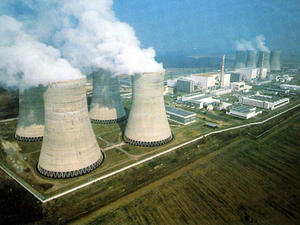Nuclear mattersMIT: No shortage of uranium for nuclear energy, more research needed
New study challenges the assumption that the world is running out of uranium — and suggests that nuclear power using today’s reactor technology with a once-through fuel cycle can play a significant part in displacing the world’s carbon-emitting fossil-fuel plants, and thus help to reduce the potential for global climate change

Plenty of fuel for the future // Source: wordpress.com
Uranium supplies will not limit the expansion of nuclear power in the United States or around the world for the foreseeable future, according to a major new interdisciplinary study produced under the auspices of the MIT Energy Initiative.
The study challenges conventional assumptions about nuclear energy (see “World heading for a uranium crunch,” 29 November 2009 HSNW; and “How long will the world’s uranium deposits last?” 27 January 2009 HSNW). It suggests that nuclear power using today’s reactor technology with a once-through fuel cycle can play a significant part in displacing the world’s carbon-emitting fossil-fuel plants, and thus help to reduce the potential for global climate change. Determining the best fuel cycle for the next generation of nuclear power plants, however, will require more research, the report concludes.
The report focuses on what is known as the “nuclear fuel cycle” — a concept that encompasses both the kind of fuel used to power a reactor (currently, most of the world’s reactors run on mined uranium that has been enriched, while a few run on plutonium) and what happens to the fuel after it has been used (either stored on site or disposed of underground — a “once-through” cycle — or reprocessed to yield new reactor fuel).
Ernest J. Moniz, director of the MIT Energy Initiative and co-chair of the new study, says the report’s conclusion that uranium supplies will not limit growth of the industry runs contrary to the view that had prevailed for decades — one that guided decisions about which technologies were viable.
“The failure to understand the extent of the uranium resource was a very big deal” for determining which fuel cycles were developed and the schedule of their development, he says.
In the United States, the idea of a limited uranium supply prompted decades of planning aimed at ultimately developing “fast spectrum” reactors to breed plutonium. Such systems convert non-fissile forms of uranium — that is, not capable of sustaining a nuclear reaction — into different fissile elements, including plutonium, that could be used to fuel other reactors. Thus, via fuel recycling, they create a much greater supply of reactor fuel than could be obtained by relying only on fuel made directly from processed uranium ore.
It would take a conventional light-water reactor (LWR) thirty years, however, just to provide the plutonium to start one such breeder reactor, and so far, such systems have not been found to be
